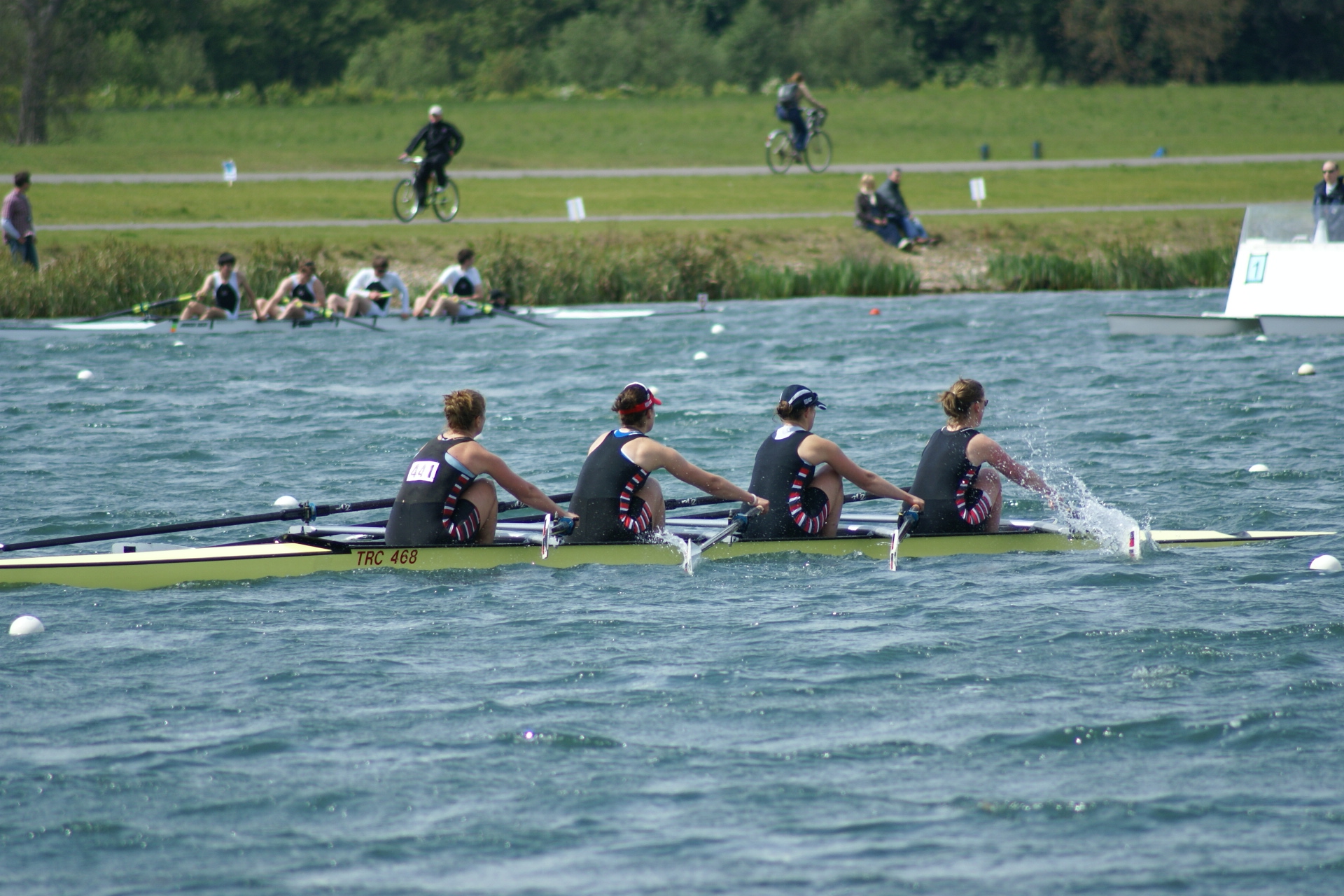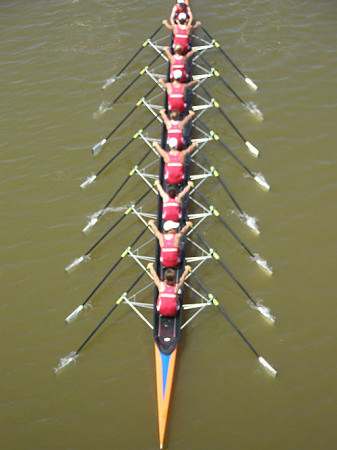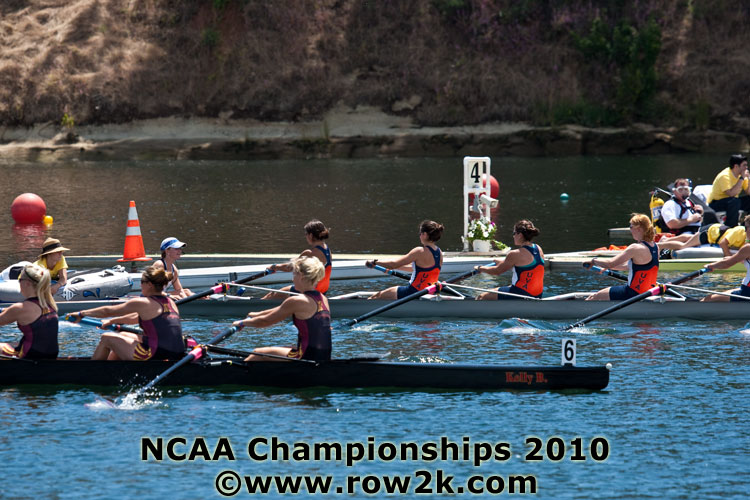In honor of CRASH B. Sprints, which occurred this past Sunday, I am going to dedicate this post to discussing erging and winter training. First I’ll begin by explaining that CRASH Bs is the world indoor rowing championship. It occurs each year in February. Since 2008, the event has been held at Boston University’s Agganis Arena in Boston, Ma. The event originated in 1980 with the invention of the Concept 2 Model A rowing ergometer. In the winter of 1980 some Olympic and National team rowers got together to hold an event to try and break up the monotony of winter training. That first event in 1980 had very few people who participated at Harvard University’s Newell Boathouse on the Charles River in Cambridge, Ma. Over time the event expanded to become the indoor rowing championship.
The event is open to any competitor who would like to enter. There are no qualifying times to participate. CRASH Bs does not have qualifying times because it wants to give all athletes the opportunity to enjoy competition and to break up the routine of winter training. Competitors are broken up into age categories. There is a junior’s category, which is ages 14-18, and there is an Under 23 category in which competitors are ages 18-22. After age 19 competitors can enter open events in which ages are grouped by 10 years. So, ages 19-29 are one category, and 30-39 is a category, 40-49 is a category and so on covering the oldest entry. Although there are no qualifying times to enter a partner of the CRASH Bs event, Concept 2, provides airfare to the event to participants who meet their qualifying times. Concept 2 wants to ensure that the fastest athletes in the world are able to participate in the event.
The participants in the event race on ergometer, which are commonly called ergs, for 2,000 meters. 2,000 meters is the distance of a spring sprint race, and sprint racing is what athletes have been preparing for all winter. The athlete with the fastest time in their age category is the winner of that category. The winner of each category receives a golden hammer as their trophy, which is simply a unique tradition of CRASH Bs. The golden hammer is recognized distinctly as a trophy of CRASH Bs in the rowing community.
This is a video from CRASH Bs 2010. This is a video of Felix Bach, who won the Junior Men's category. In this video he is rowing with the junior women because there were technical problems with his erg in his event, so he was allowed a re-do in the women's event. This video is helpful simply to see what erging is.
In order to fully understand what CRASH Bs is you must understand what an erg is and what erging is all about. Erging is what rower’s call the activity of using an erg. An erg is an indoor rowing machine that allows rowers to train on land.
This is the most current model of an erg.
The erg allows an athlete to see many features about their stroke. It allows the power of the athlete to be measured. This can be measure through recording watts, or more commonly by looking at meters pulled or the predicted split of a rower over a distance of 500 meters. The split over meters is difficult to understand at first, but it is essentially explain how long it would take the rower to travel a 500-meter distance. This is a similar feature to what most treadmills have. Treadmills predict for you how long it would take you to travel a mile at a certain pace; the erg does the same thing but over 500 meters rather than a mile. Ergs are used as a way to judge how fast an individual athlete can be during a race. In order to determine this rowers are tested on 2,000-meter and 6,000-meter tests. These are the distances of a sprint race and a headrace.
In the winter it is often too cold to row on the water, and bodies of water are often frozen. These conditions force rowers to move indoors for training. The erg allows for indoor training. Erging is just part of what most athletes do for their winter training. Like any other sport many forms of strength and condition exercises are used to strengthen the athlete.
Even though erging is a core part of winter training, it is not restricted to just the winter. Most athletes erg year round. Training on the erg is an integral part of a rowers training because it creates a solid cardio basis for rowing, allows for practicing of the stroke, and develops essential muscles used by athletes. Most rowers feel the erg is a necessary evil. Rowers often complain about erging because it pushes you to your limits. You see every stroke how hard you are pulling. It is both a mental and a physical test to complete a 2k or a 6k test. As the CRASH B’s website says, “This ergometer has become serious business, threatening to replace fun with pain, unless you can equate the two.”
All information about CRASH Bs was found on their website: www.crash-b.org.












